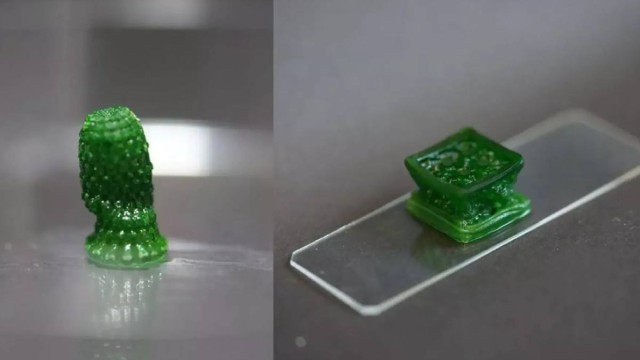Scientists have developed a new 'photosynthetic' material capable of absorbing carbon dioxide (CO2) from the atmosphere that could one day be used in buildings to combat climate change.
The innovative material was created by Swiss researchers using blue-green algae, known as cyanobacteria, which convert CO2, sunlight, and water into oxygen and sugars through photosynthesis.
Under specific nutrient conditions, the material can also transform CO2 into sturdy, eco-friendly construction components and solid minerals such as limestone. This provides permanent carbon storage while strengthening the material, the researchers said.
“Cyanobacteria are among the oldest life forms in the world. They are highly efficient at photosynthesis and can utilize even the weakest light to produce biomass from CO2 and water,” said Yifan Cui, one of the two lead authors of the study, as reported by NDTV.
The carrier material that houses the living cells is a hydrogel — a gel made of cross-linked polymers with high water content, according to the study published in the journal Nature Communications.
To ensure the cyanobacteria live as long as possible and remain efficient, the researchers optimized the geometry of the structures using 3D printing processes. This increased the surface area, allowed greater light penetration, and promoted the flow of nutrients.
“We engineered printable photosynthetic living materials that were capable of carbon sequestration through biomass accumulation and inorganic carbonate precipitation,” the study highlighted.
Test results
Test results showed the material continuously absorbed CO2 over a 400-day period, with most of the “sequestered carbon stored in the stable mineral form.”
The total amount of CO2 sequestered through mineral formation after 400 days was 26 milligrams per gram of CO2 per gram of material. This is significantly more than many biological approaches and comparable to the chemical mineralization of recycled concrete, which is around 7 mg CO2 per gram.
“With minimum requirements of sunlight and atmospheric CO2, our photosynthetic living materials showed consistent carbon sequestration efficiency throughout the entire incubation period,” the researchers stated.
At an art exhibition in Venice, Italy, the researchers showcased the material in the form of two tree trunk-like objects. These structures could absorb up to 18 kilograms of CO2 per year — equivalent to the amount absorbed by a 20-year-old pine tree.





Comments here: